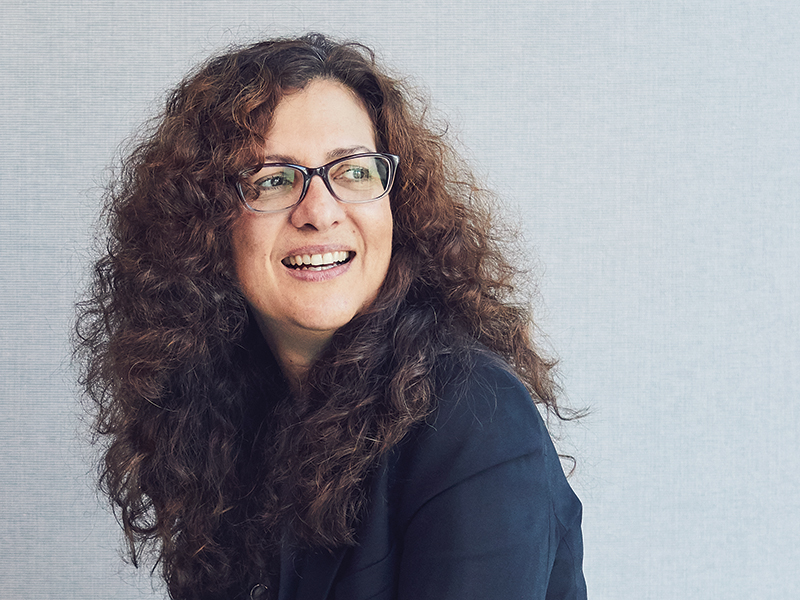

Borden Ladner Gervais LLP is taking its employees’ mental health seriously.
Four years ago, it implemented a strategy to focus on building awareness, reducing stigma and encouraging self-care and wellness. This started with one-on-one mental-health first aid training for all employees, says Laleh Moshiri, the Toronto-based law firm’s national director of diversity and inclusion. “Raising awareness was the purpose, because we all have friends in the workplace, and it’s just good for everybody to better understand some of the issues.”
BLG also rolled out the workplace mental-health leadership certificate offered by the faculty of health sciences at Queen’s University in partnership with Morneau Shepell Ltd. and Bell Media Inc. “I did both of them myself and I think they’re terrific,” says Moshiri.
Read: Workplace mental-health training on the rise: Sanofi survey
In addition, the organization often focuses on mental health in its monthly diversity and inclusion bulletin, and includes links to resources and articles on its company-wide intranet. This month, BLG is increasing the coverage for mental-health and psychological services under its extended health-care benefits plan, from $1,000 to $5,000. “We actually made sure every type of mental-health care provider was covered. . . . We made sure that whatever the designation was . . . that that was covered,” she says.
Employees also have access to educational courses to help promote health and well-being, additional mental-health training through the Canadian Bar Association and onsite counselling.
The ideal environment
The workplace is an optimal setting for creating a culture of health, according to the U.S. Centers for Disease Control and Prevention, because:
- Communication structures are already in place;
- Programs and policies come from one central team;
- Social support networks are available;
- Employers can offer incentives to reinforce healthy behaviours; and
- Employers can use data to track progress and measure the effects.
Ease of access
The onsite offering is a unique feature of BLG’s wellness program. Counsellors are available twice a month in each of the law firm’s five offices across Canada. Employees receive an email with the counsellors’ dates, and then can reach out directly for an appointment.
“We don’t know who is seeing the counsellors,” says Moshiri. “Part of the reason we introduced this was ease of access; you want to make the help as easy as possible to access. But I would say the biggest part is to demonstrate that seeking self-care is part of our values, that we’re wanting to make part of the norm.”
As for any legal or privacy issues, the counsellors are all bound by the ethical rules of their profession and confidentiality agreements, as well as their own legal obligations, adds Moshiri.
Read: Plan sponsors urged to tread carefully when considering mental-health apps
While Den Temin, a board-certified clinical sexologist based in Toronto, offers clinical practice and services for professional development to individuals, she also provides leadership and training development in workplaces. The diverse nature of her practice makes it easier to go directly into a workplace because she could also be going in for coaching or training of any kind.
“I have a program called ‘From the Bedroom to the Boardroom’ [and it’s about] transferable skills,” she says. “So when I go into offices, people don’t really know if I’m in for training or a workshop, or actual clinical therapeutic services.”
This diversity is advantageous compared to other in-house counsellors or therapists, where everyone knows who they are and what services they offer. Moshiri acknowledges this could be an issue, noting she certainly took it into account when BLG first decided to offer mental-health therapy in the workplace.
Safe space
Alongside the program’s aim of easing access, BLG also considered employees’ privacy. In setting up the program, for instance, Moshiri went into all of the law firm’s offices to find the most secluded room. “We found the most confidential, private space, a more hidden, tucked-away space that we could find in each of our offices.”
Robin Bailey, managing partner at Aria Benefits, says it’s important for employers to consider privacy when bringing counsellors and therapists into the workplace. “It depends on the size of the company, but if I take my broker hat off and I’m thinking as a business owner — and this is something I want to do for my employees here — my question is privacy, because all of a sudden there’s someone sitting in conference room B and I see Joe walking in and I think, ‘Oh, Joe’s got problems. What are Joe’s issues?’ So I think having something like a virtual platform where people can do it in the privacy of their own home or at their own desk and office is a good idea.”
Read: Niagara Casinos earns mental-health award for prevention, awareness strategy
For BLG, part of its strategy was to remove stigma. Moshiri feels confident that, as an employer, it’s slowly chipping away at that barrier, evidenced by the fact that “people are comfortable.”
However, she believes the offering will have achieved the highest level of success if an employee says to a colleague, “Hi, I’m off to see the counsellor,” essentially reaching a point where seeing an in-house therapist is a non-issue.
“That’s sort of what we aspire to. I’m not sure we’re quite there yet. But I have to say, we’ve now had this program for four years, and the rate [of usage] has gone up . . . [because] people are talking about it. . . . People are coming to me and saying, ‘I went to see the counsellor. She was great.’ So I think we’re headed in the right direction.”
Alethea Spiridon is managing editor of Benefits Canada.
